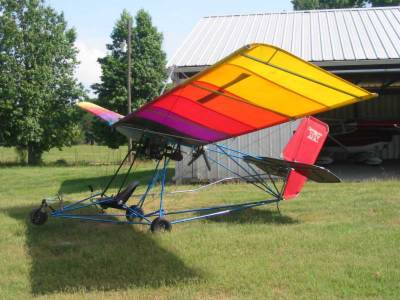The time comes to start the engine. Of course the Mikuni carburetor that came with the engine isn't recommended for flying, but lots of people use them. I couldn't get mine to work. Instead of fooling with the jets and adjustments, I decide to use the old BING 54 that was on my old 377. When I start to disassemble it and clean it, I'm appalled by the corrosion that is present all in the aluminum casting. I try to clean as best as I can with the carb cleaner that you soak parts in, then I reassemble using new seals and gaskets. I'm trying to avoid buying a new carb, but in the process I spend about half the price of a new carb.
I take the rebuilt carb to the hanger on the next weekend, screw around with it for about 2 hours with no success and finally decide to order a brand new carb from Mark Smith. Another weekend wasted.
The carb arrives the next week and I install it on the next weekend. The engine starts and sounds pretty good, but I can't really get the Cylinder Head Temperature (CHT) or the Exhaust Gas Temperature (EGT) in the proper ranges. I mess with the jetting and get it to be fairly reasonable with the temps. I tie up the airplane outside and do some full throttle tests. Damn, the tachometer is flaky. I'll have to order a new one before I can check to see that my full throttle RPM is not over max. I'm done for this weekend.
The following week, the tachometer arrives. I install it the next weekend and do some more full throttle tests. It appears that my prop has too much pitch in it and does not allow the engine to develop full RPM. Damn! I have to order some parts to change the prop pitch. Once again, I've done all I can do for this visit.
The next weekend I install the new blocks that change the pitch on the propeller. I tie the airplane up outside again and test. The RPM is still not high enough, but luckily, I have another set of blocks that will decrease the pitch another degree. I install them and test again. BINGO! I've got the proper top end RPM for the engine! Now I have to find the right combination of carb jets to get the proper EGT and CHT. This takes another couple of hours, and before you know it, I've got 5 hours worth of testing on this engine and I haven't even left the ground! I finally get thing properly adjusted, but EGT and CHT and RPM are slightly different in flight, so it's time to do some flying!

My Quicksilver MX before the installation of engine guages and the ballistic recovery parachute




